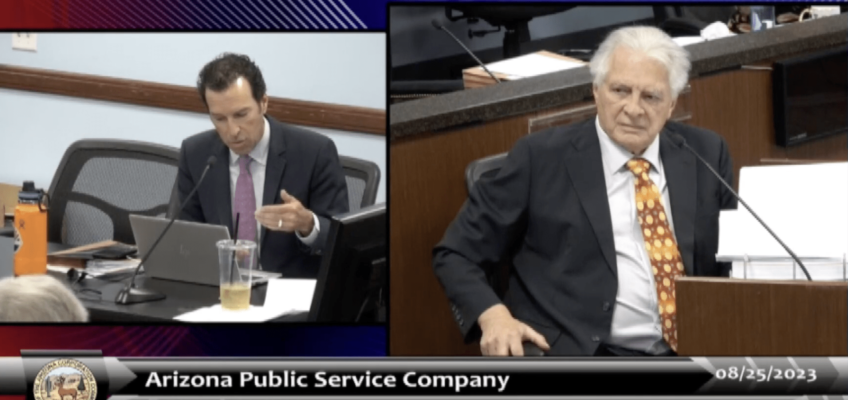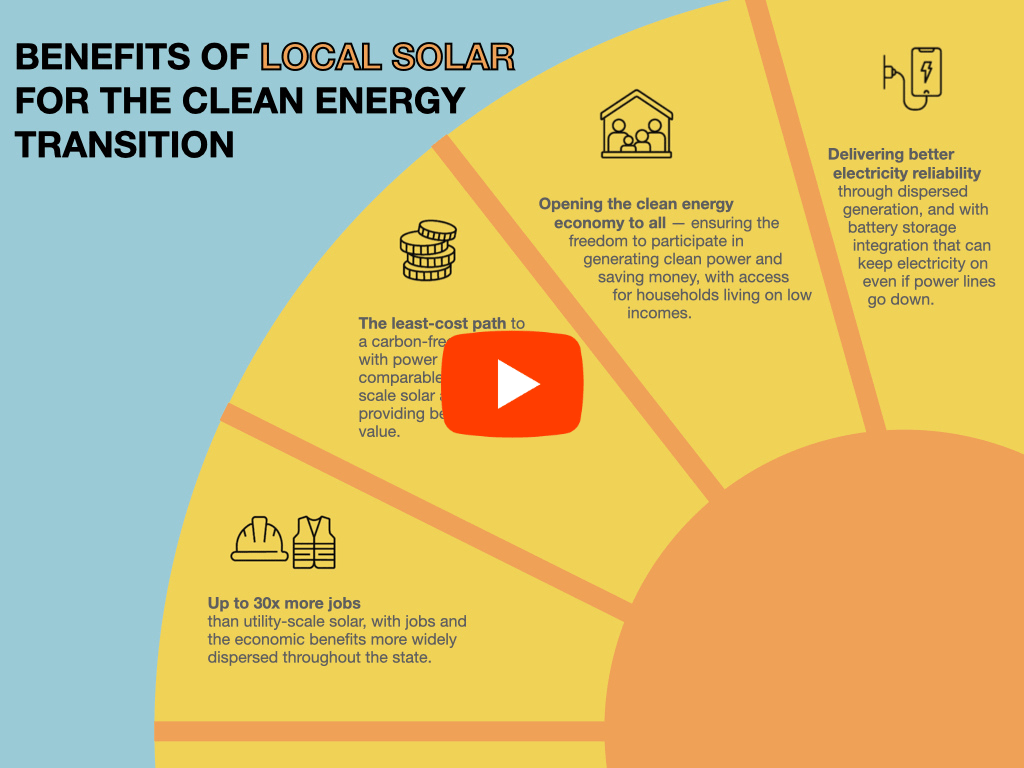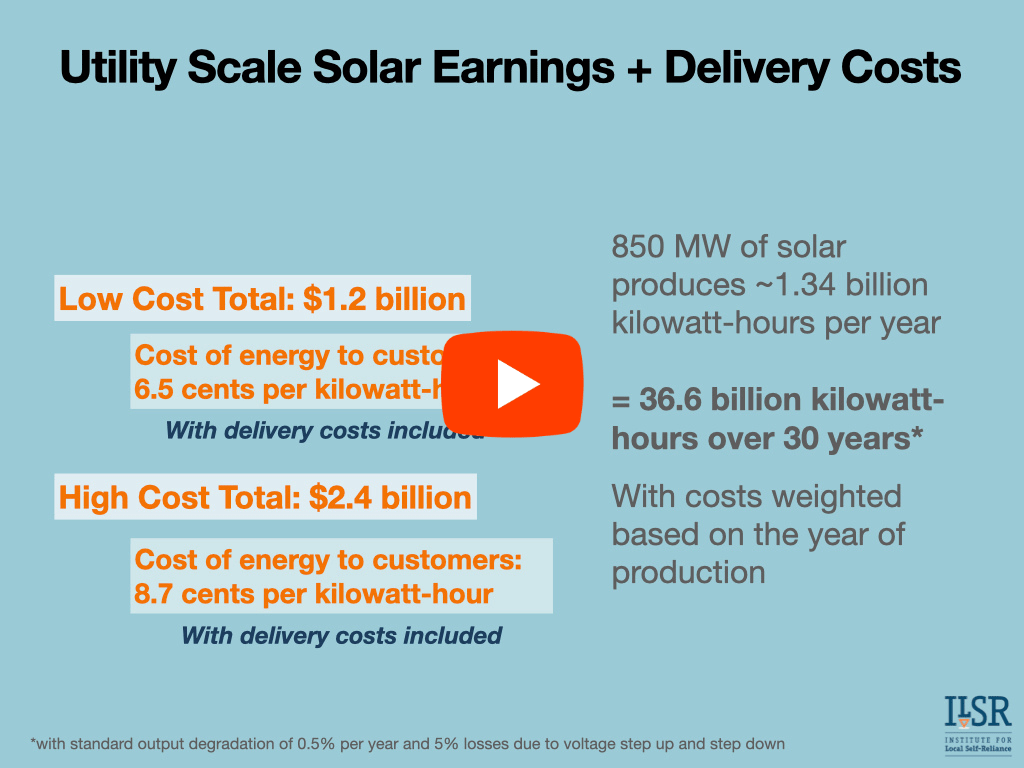Electric utilities often misrepresent the cost of solar energy to serve their own profit interests, as recently disclosed in utility witness testimony before Arizona utility regulators. The truth? Costs are comparable for utility-scale, rooftop, and community solar––and local solar offers benefits aside from clean electricity, from reducing energy burdens for electric customers to providing resilience in the face of natural disaster. State legislatures should create policies to capture the benefits of all sizes and ownership methods of building more solar energy, but should especially work to undo years of utility misdirection by promoting local solar.
Click to open the issue brief slideshow, or download it to your device
View the “expert edition” slideshow (with more detail on the utility-scale solar calculations), or download it to your device
Both presentations calculate rooftop and community solar costs by using rates paid to participants minus the transmission and delivery cost savings from building arrays locally. The example uses figures from Xcel Energy territory in Minnesota, where local solar rates are in line with the national average, based on net metering or the Minnesota “value of solar” tariff. Utility companies’ cost estimates tend to leave out the costs of delivering generated electricity to customers and paying their shareholders. Both hidden costs figure into real bills for utility customers
The utility-scale estimates are validated by public disclosures of costs for two recent Midwest utility-scale solar projects.
Click here to view the spreadsheet with detailed calculations on utility scale solar costs.
Learn more about the policy decisions impacting local solar adoption in these Local Energy Rules podcasts:
- Don’t Follow California’s Lead on Rooftop Solar
- 13 States Flunk This Standard Test
- Interconnection and Grid Planning
- Get More Solar by Making Utilities Share Data







